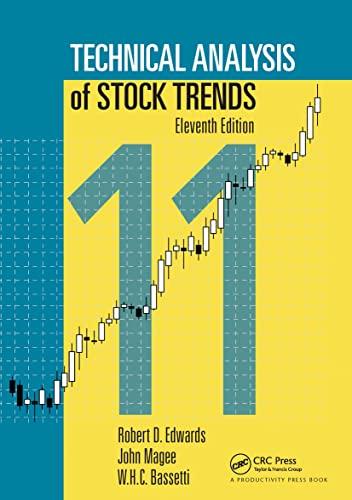Question
Answer the questions from the article below: 1.Why are mortgage rates increasing? 2.Describe how a mortgage on a home becomes part of a mortgage-backed security.
Answer the questions from the article below:
1.Why are mortgage rates increasing?
2.Describe how a mortgage on a home becomes part of a mortgage-backed security.
3.What impact have the Fed's actions had on the market for mortgage-backed securities?
Article:
Bank of America Corp. BAC -4.46%decrease; red down pointing triangle gobbled up hundreds of billions of dollars of mortgage bonds during the height of the pandemic. But with rates rising, its buying spree has ended.
Banks have stepped back from buying mortgage bonds. So has the Federal Reserve, the largest investor in that market. Foreign buyers and money managers are curtailing purchases too, analysts say.
The lack of buyers has helped push mortgage rates to their highest level in 20 years. The average 30-year fixed mortgage rate topped 7% recently, further cooling a housing market that was red hot just a few months ago.
When lenders extend mortgages to people buying homes or refinancing, they dont usually hold on to the loans. Instead, they pool them into bonds that get sold to investors, often with a guarantee from a government-controlled entity that investors will get repaid.
The average 30-year fixed mortgage rate topped 7% recently, further cooling a housing market that was red hot just a few months ago.
Today, a shrunken pool of buyers are demanding a higher yield to own mortgage bonds. That is driving up the rates on the mortgages inside those bonds at a faster pace than their benchmark, Treasury yields. The gap between them was recently the biggest since the 1980s, according to the Urban Institute.
Banks stepping back, the Fed stepping back, foreign investors stepping backthat has widened the spread that mortgages trade at versus Treasurys, which directly translates to the borrowers mortgage rate, said Nick Maciunas, a research analyst at JPMorgan Chase & Co.
Last year, an abundance of buyers for mortgage bonds helped hold mortgage rates at near record lows.
The biggest buyer was the Fed itself, which purchased swaths of the bond markets to stimulate the economy during the pandemic. Its holdings of mortgage-backed securities roughly doubled from before the pandemic to $2.7 trillion.
But the Fed moved away from its easy-money policies this year. It wound down mortgage bond purchases and began to shrink its holdings. The central bank hasnt bought in the past couple months.
For banks, mortgage bonds were a low-risk place to store cash as Covid-19 spread, when they collected trillions of dollars in deposits that needed a home. Americans socked away stimulus checks and cut back on spending, and companies put hoards of cash in bank accounts. At the same time, people and businesses cut back on borrowing.
Bank of America CEO Brian Moynihan laid out the math in a July 2021 call with analysts. Deposits, he said, exceeded $1.9 trillion, while loans were at about $900 billion. That difference has got to be put to work, he said.
The 10 banks that own the most mortgage-backed securities increased their holdings by almost $219 billion last year, according to JPMorgan data.
For a while, Bank of America was by far the largest bank buyer. Around the end of 2020 and beginning of 2021, the bank was adding to its mortgage-bond portfolio at almost as fast a clip as the Fed.
By the end of 2021, it had amassed a $979 billion bond portfolio, up from $470 billion at the end of 2019. That included some $622 billion of mortgage-backed securities, $554 billion of which it said it would hold to maturity and $68 billion that it classified as available for sale.
Higher rates arrived this year and scrambled the economics of buying. Banks deposits have leveled off and in some cases declined. Loans are growing again. Some banks are also opting to hold mortgages, instead of mortgage bonds, on their books.
The 10 largest bank owners of mortgage bonds trimmed their holdings by $133 billion during the first nine months of 2022, including about $53 billion during the third quarter, according to JPMorgan. Much of that decline is from maturing bonds that arent reinvested in new ones.
The mortgage bonds have also fallen sharply in price as rates have risen. Bank of America expects to hold most of its existing mortgage bonds to maturity, which would mean it wouldnt take losses on these investments due to falling prices. But if it did sell now, it would have losses of nearly $100 billion.
Mr. Moynihan has said the bank didnt make a bet on interest rates when it bought mortgage bonds. It was simply investing deposits as they came in.
Were not timing the market or betting, he said in July 2021. We just sort of deploy it when were sure its really going to be there.
Step by Step Solution
There are 3 Steps involved in it
Step: 1

Get Instant Access to Expert-Tailored Solutions
See step-by-step solutions with expert insights and AI powered tools for academic success
Step: 2

Step: 3

Ace Your Homework with AI
Get the answers you need in no time with our AI-driven, step-by-step assistance
Get Started


